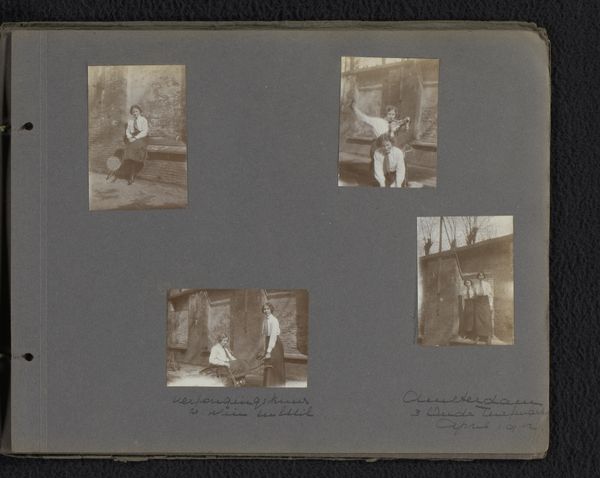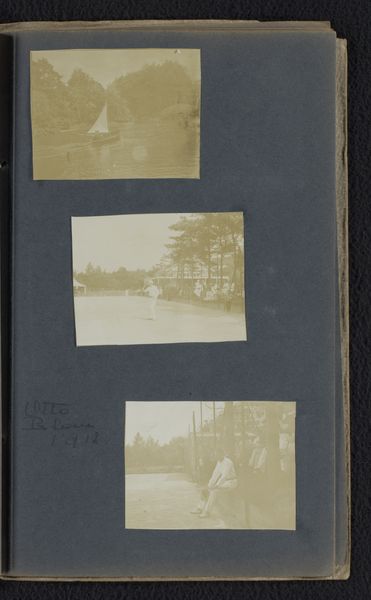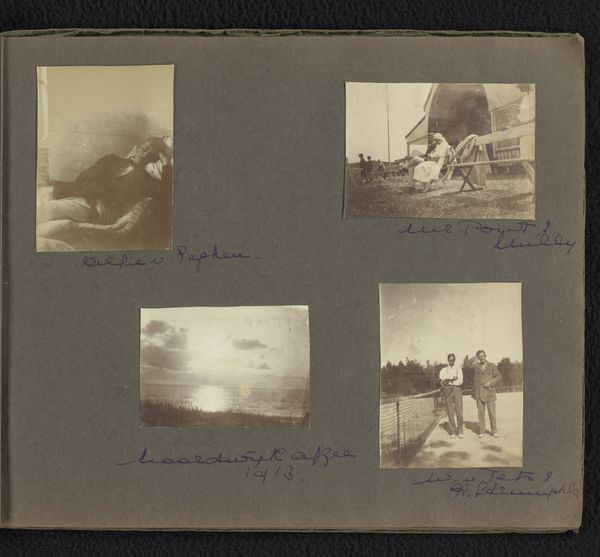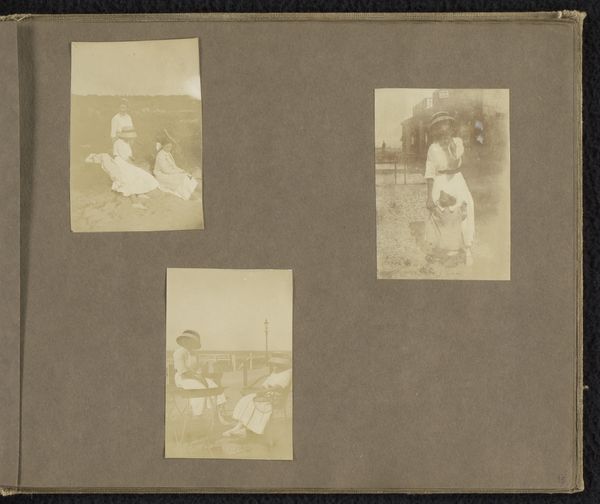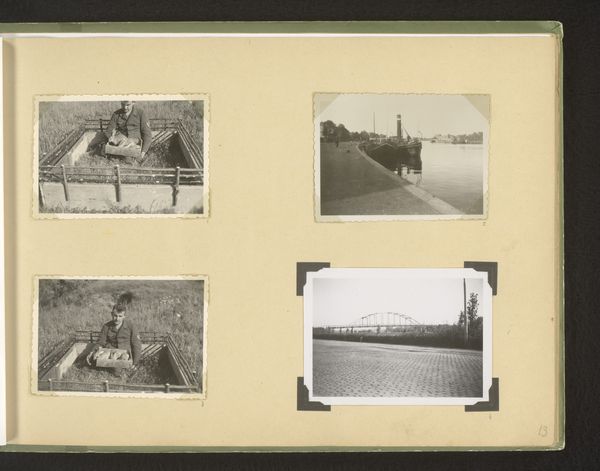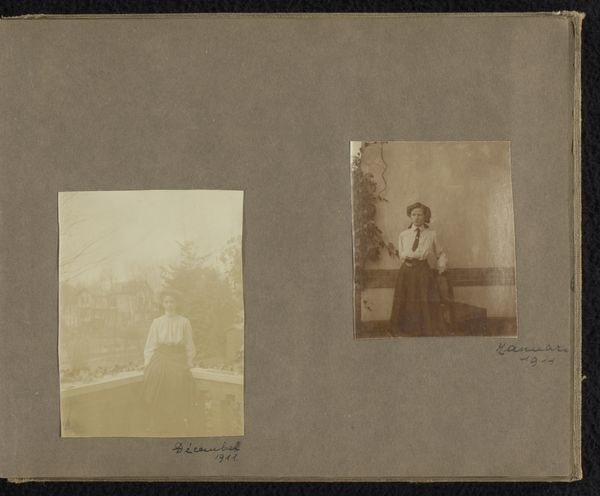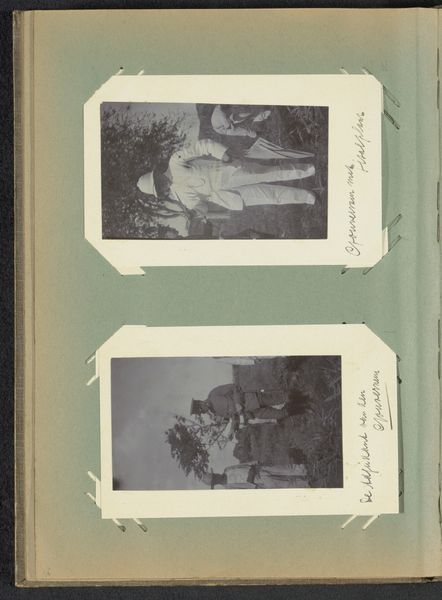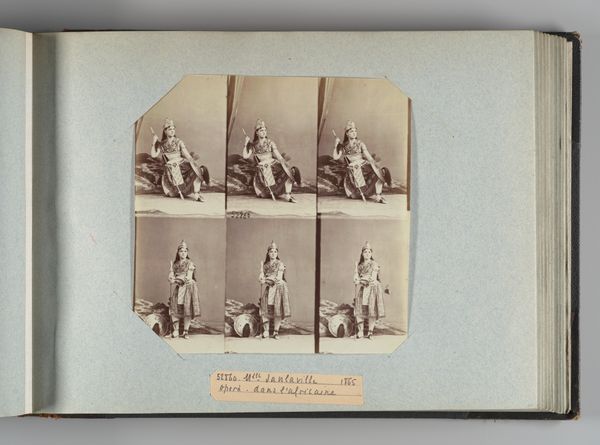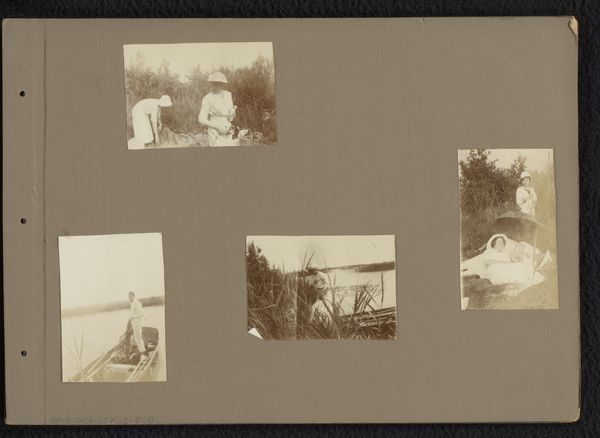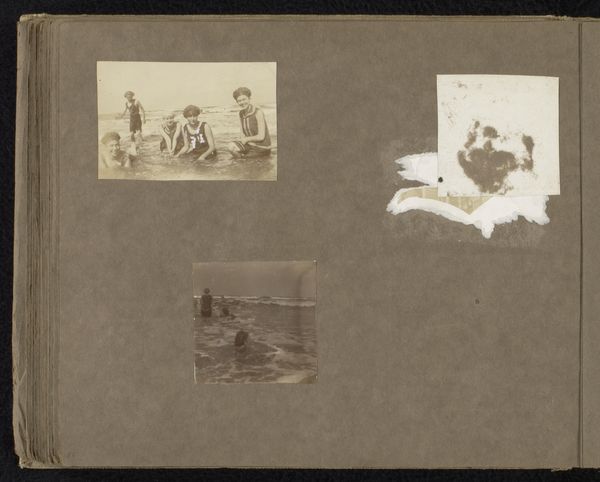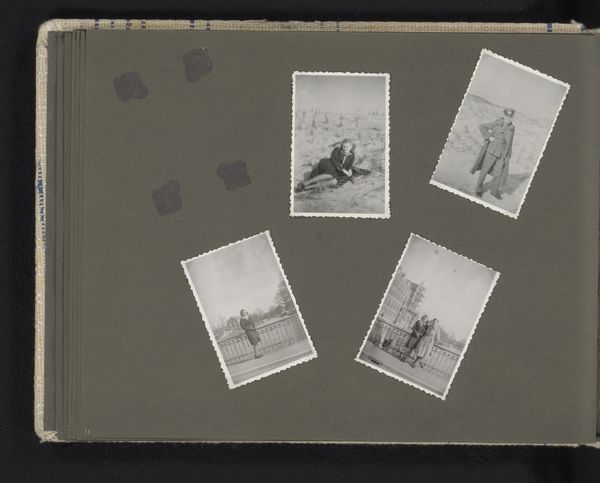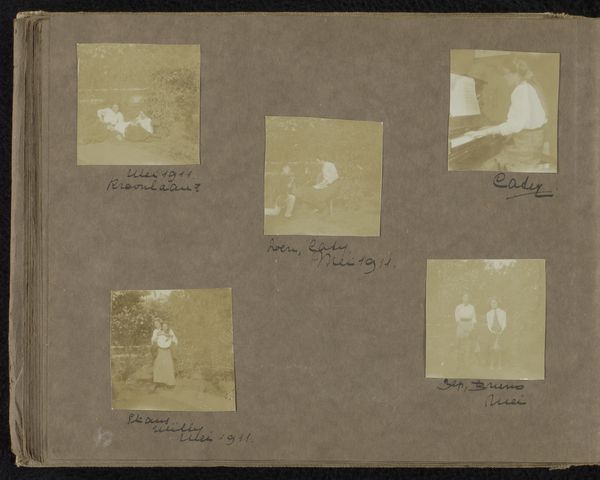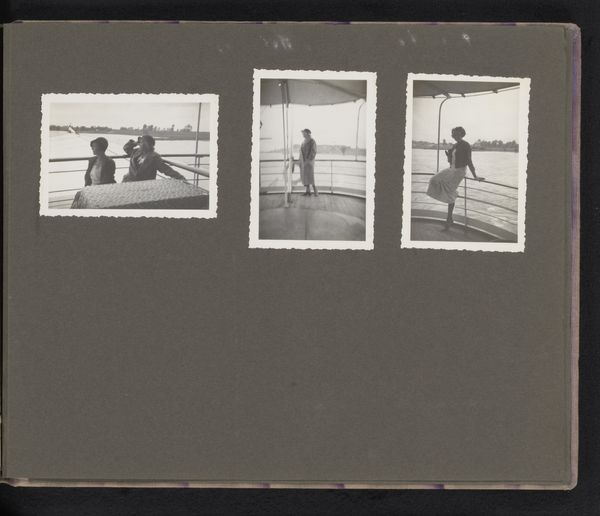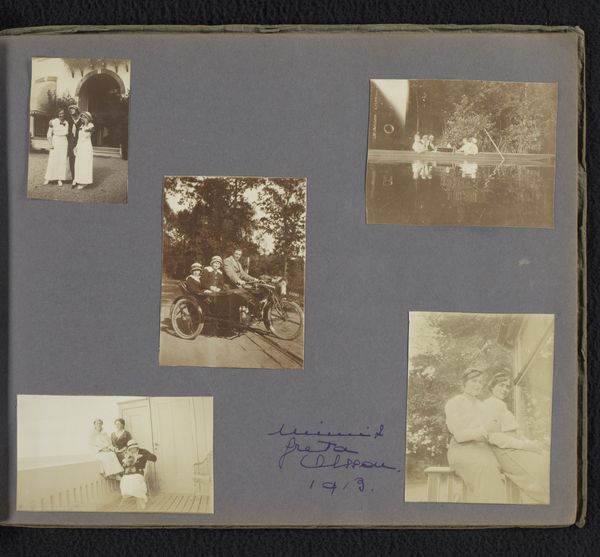
Drie mensen in een roeiboot op de Theems, waaronder Ella en Winny Uhlenbeck 1911 - 1918
0:00
0:00
photography, gelatin-silver-print
#
portrait
#
landscape
#
photography
#
gelatin-silver-print
Dimensions: height 220 mm, width 310 mm
Copyright: Rijks Museum: Open Domain
Curator: The light in this photograph, particularly around the figure standing with the pole, feels ethereal, almost symbolic of guidance. It's melancholic, somehow. Editor: And this is “Three People in a Rowboat on the Thames, including Ella and Winny Uhlenbeck," a gelatin silver print captured sometime between 1911 and 1918 by Carolina (Loentje) Frederika Onnen. It appears to be documenting a leisurely moment on the river. Curator: The composition, those figures arranged in a descending diagonal in the frame—the rower standing, one figure seated, and another reclining—it makes me wonder about social roles and expectations of leisure during that era. There’s a passivity in those being rowed that might carry implications beyond simply a day on the water. Editor: Exactly! Onnen’s choice of gelatin silver printing allows for such clear details. Note how the fashions and the Thames location would point towards a specific class and social status, too. Rowing on the Thames became quite fashionable among certain circles in this period. Curator: The river itself, a classic symbol of journey and transformation... And the woman with the pole could represent control or direction, though that control is mediated, made gentler, through her apparent leisure. This hints at societal norms that subtly empowered women. Editor: The ambiguity is also striking, wouldn’t you agree? This photograph sits firmly within the cultural landscape of early 20th-century Britain. Consider also the societal factors—who had the opportunity to be photographed this way, and what kind of statements were such portraits designed to make. Curator: Absolutely. This almost functions as an echo or remembrance of certain archetypes present throughout portraiture’s long history. We can almost map our changing psychological relationship with freedom, authority, and femininity itself through this image. Editor: Indeed, it provides such a rich context into the art, the subject, and the times in which this photograph came to exist. Curator: So many subtle suggestions about power, position, and persona held frozen within a peaceful, yet subtly charged moment.
Comments
No comments
Be the first to comment and join the conversation on the ultimate creative platform.
